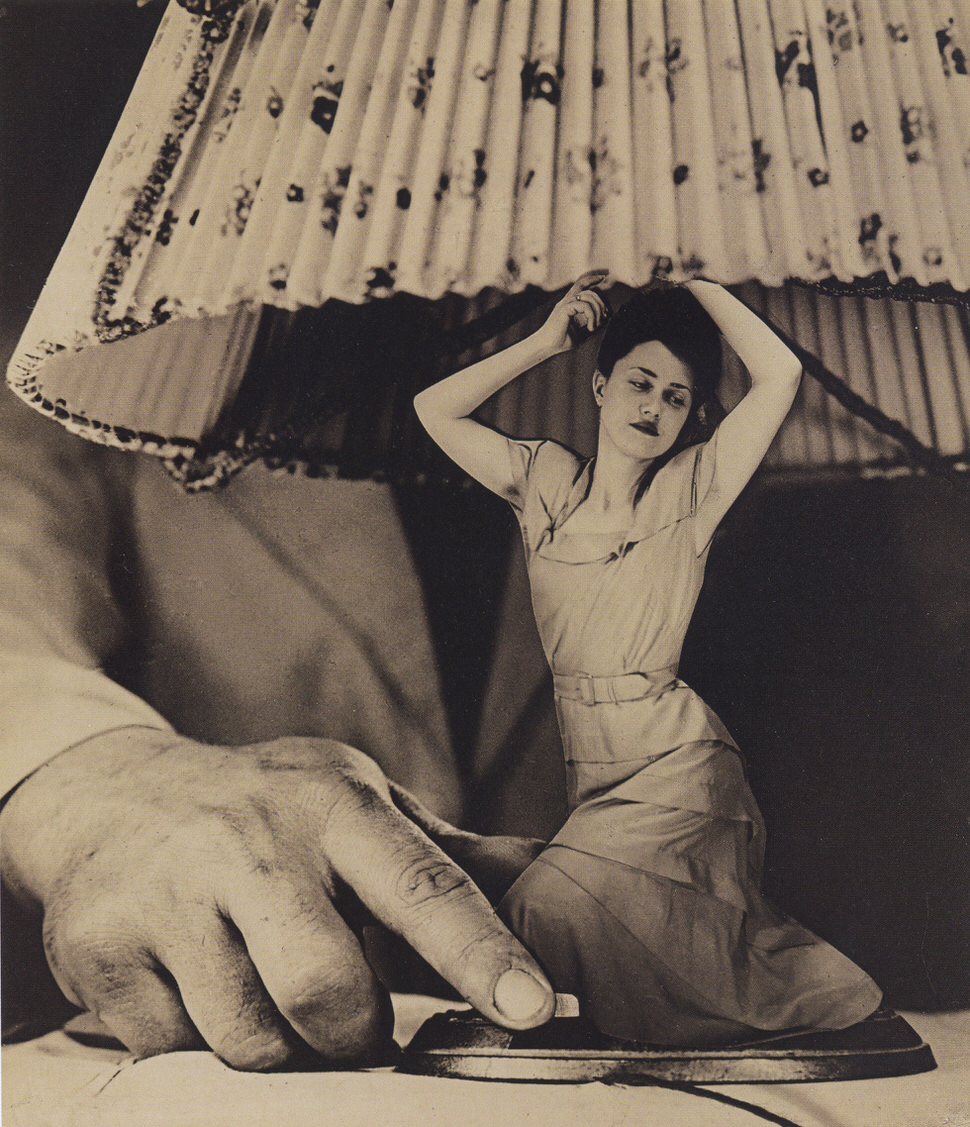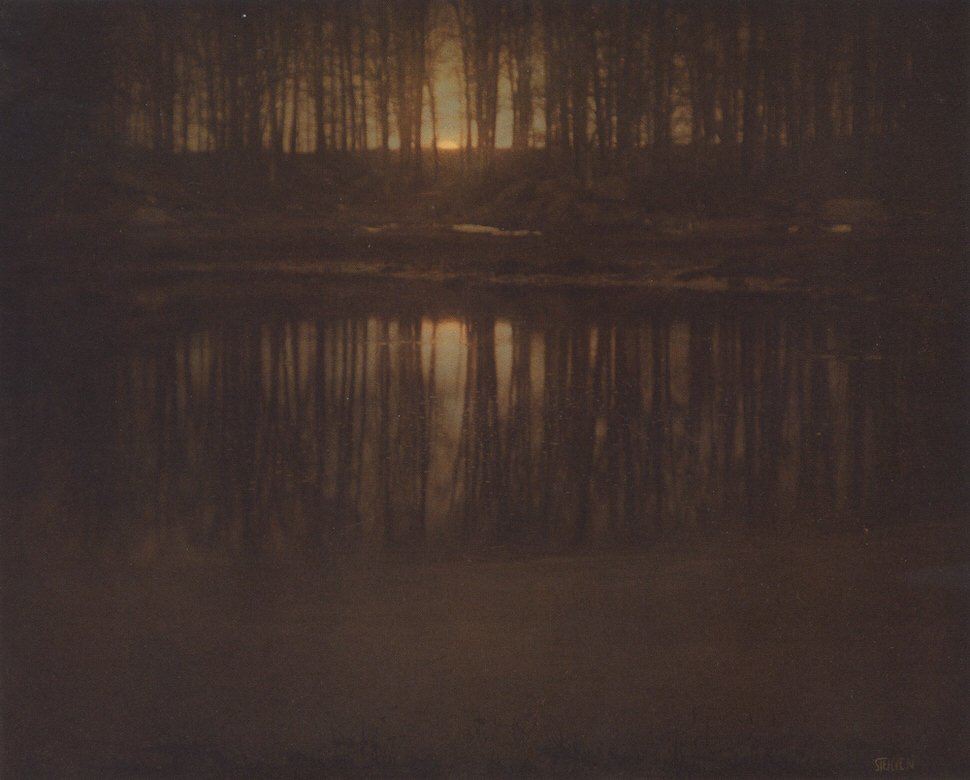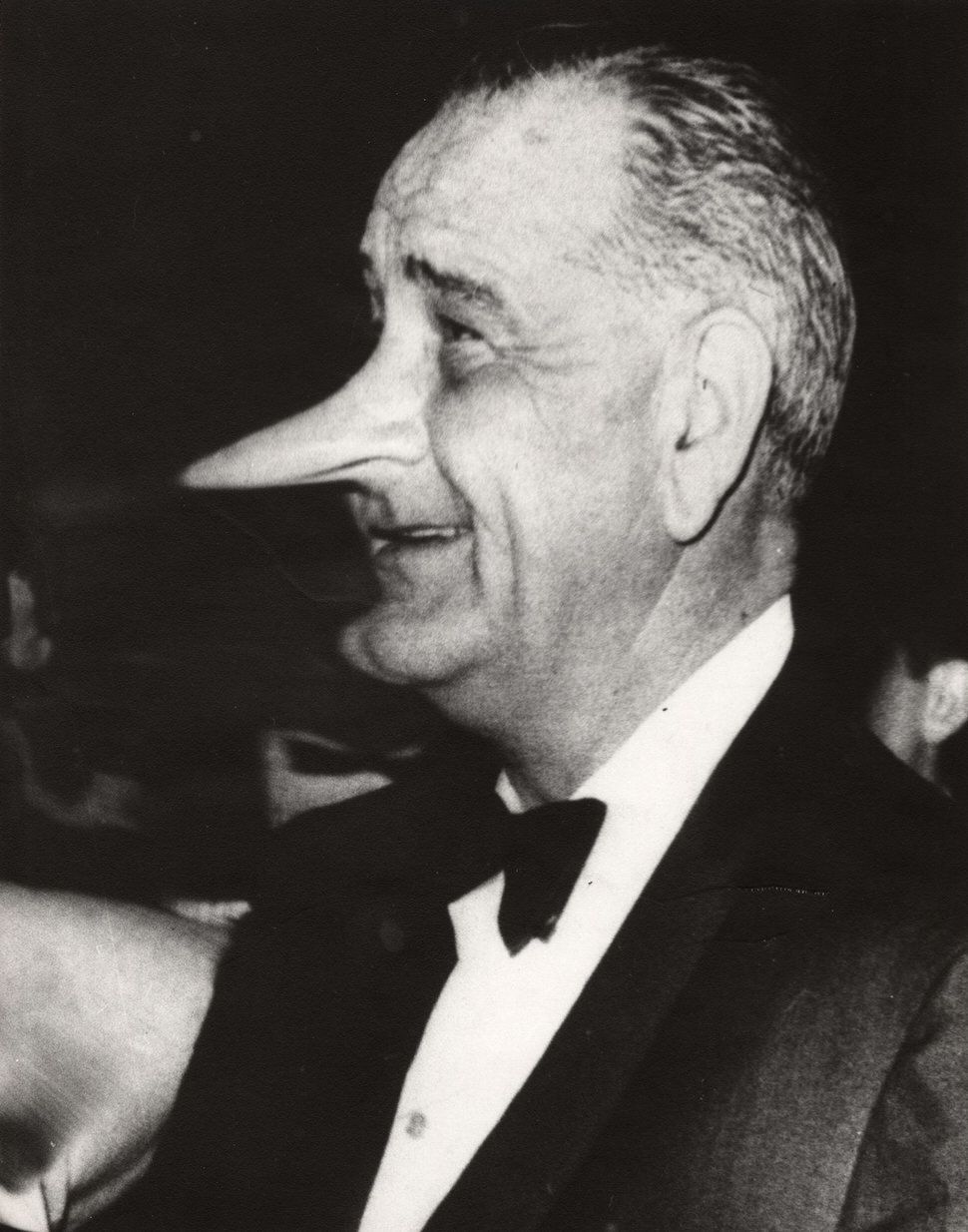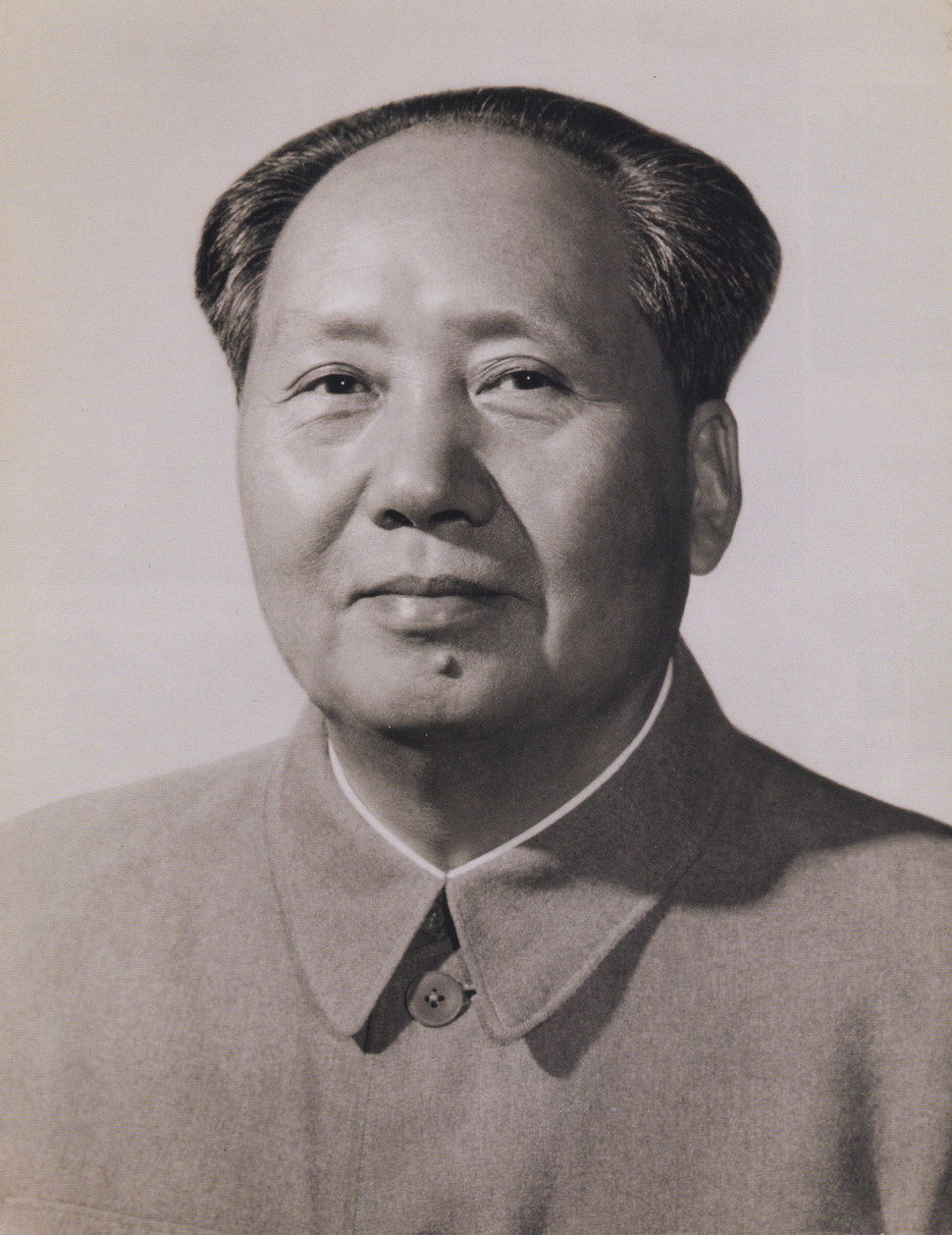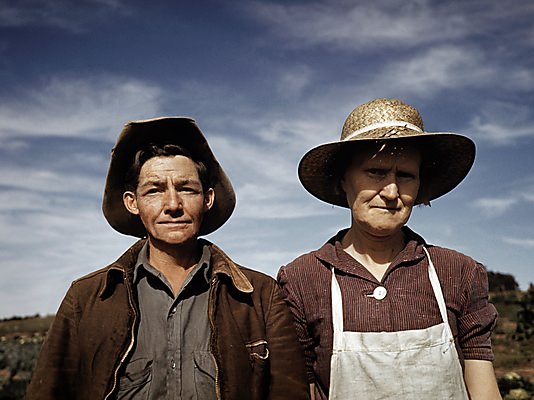“Every photograph is a fake from start to finish,” the photographer Edward Steichen asserted in the first issue of Camera Work in 1903. In what amounts to a backhanded defense of photography as art, Steichen explained that “a purely impersonal, unmanipulated photograph” was “practically impossible.” A year later, he would print The Pond-Moonrise—a sylvan pond contemplated through a heavy curtain of atmosphere, realized through layers of pigment, the application of a blue wash, and an enhanced (or introduced) slice of lunar radiance.
Is photography a way of documenting the world that has an inherent “truth-claim” on the real? Or is it, as Steichen suggested, essentially graphic, a technique for creating a certain kind of image? “Faking It: Manipulated Photography Before Photoshop,” an exhibition now up at the Metropolitan Museum of Art (later traveling to the National Gallery and Houston’s Museum of Fine Art), makes a vigorous case for understanding the medium as Steichen did. The argument is amplified in the accompanying catalogue written by curator Mia Fineman, who, in effect, proposes a new truth-claim of her own: “Photography’s veracity has less to do with essential qualities of the medium than with what people think and say about it.”
According to Fineman, photography has been artificially enhanced almost from its advent in 1839. “Especially in the early days of the medium, producing a realistic-looking photograph often required a healthy dose of artful trickery,” she writes. Moreover, the familiar insistence on photographic objectivity is itself something that derives from the early twentieth-century emergence of photojournalism and social documentary—and also, we might add, of motion pictures. In that sense, photography is pre-modern as well as postmodern.
The first gallery of “Faking It!” is mainly devoted to mid-nineteenth-century portraits, landscapes, and still lifes. Rather than faithfully recording their subjects as they appeared to the camera, these photographs imitated paintings. Daguerreotype portraits were delicately shaded; sometimes with backgrounds sketched in. Hand-applied color heightened the flames in Charles Nègre’s otherwise straightforwardly photographed candelabra. Artful printing might insert a landscape into a window, transform daytime scenes into nocturnes, or dramatically simplify a composition. More perfect than impressionist paintings, the images produced in the late 1850s by French landscape photographers like Gustave Le Gray and Camille Silvy combined two glass negatives in order to contrive cloud-filled skies lowering over stormy seas or rivers perfectly reflecting the trees that lined their banks.
This early period also produced some elaborate allegorical tableaux, sometimes involving as many as thirty negatives: consider Oscar Gustav Rejlander’s elaborately staged Two Ways of Life (1857), in which a mock Roman orgy competes for the viewer’s attention with various sorts of virtuous study and labor. Still, this pictorialism did not reach its apogee until certain turn-of-the-century platinum prints, like Steichen’s The Pond Moonrise. Steichen is also represented in the exhibition by a heroic moody portrait in which, thanks to the juxtaposition of two negatives, Auguste Rodin appears to contemplate his statue The Thinker—and the photographer to ponder them both.
Whether achieved through cut-and-paste or darkroom composite or a combination of the two, a less exalted form of such photomontage was already commonplace in the 1860s, along with portraits that multiplied a particular individual (often the artist) or superimposed multiple faces to arrive at a (typically criminal) “type.” Some of the most complex and labor intensive photomontages were group portraits that, despite disparities in scale and perspective, were often mistaken for documents of the real. Henry Peach Robinson’s Holiday in the Wood (1860), for example, arranges a score of obviously posed women and children in a sylvan setting, while William Notman’s Grand Trunk Railway Engineering Department Group (1877) gives the impression that the engineers responsible for the railway connecting Montreal with Portland, Maine, all dressed in business attire, have paused for a formal portrait in the midst of their surveying work.
“Faking It!”’s most popular gallery—or, at least the one that was most crowded the day I was there—is devoted to trick photographs: comic postcards showing a railroad flat car carrying a single, colossal ear of corn, the image of a statuesque woman astride a giant moth, pictures of men carrying their disembodied heads. (Although most of these predate motion pictures, some suggest the influence of the stage magician Georges Méliès, briefly the world’s leading filmmaker in the first years of the twentieth century and the subject of Martin Scorsese’s 2011 film Hugo.) Alongside these, one may find photographic political cartoons—the “distortographs” that apply the funhouse mirror treatment to the face of Chicago mayor Big Bill or Weegee’s even more grotesque caricature of a Pinocchio-nosed Lyndon Johnson.
Advertisement
Such trick photos have no pretense of truth and cannot be considered fraudulent. The effects are forced; artistic passion is missing—although that can be found in the photomontages, by John Heartfield and others. Despite their use of photographic imagery, many of these works can hardly be considered photographs at all. The nineteenth century’s lengthy vogue for “spirit photography,” the subject of an entertaining exhibition at the Met seven years ago, is closer to the “Faking It!” premise, and the show includes five photographs by the genre’s American master, William Mumler. So, too, are the bogus news photos of the 1920s and 1930s, dubbed “composographs” by the New York Graphic, the notorious tabloid that pioneered them. Although these often-crude exercises in photomontage might have persuaded the credulous with their impossible images of a dirigible docked on the Empire State Building or the Lindbergh baby kidnapper Bruno Richard Hauptmann strapped into the electric chair, I suspect they were mainly enjoyed as the visual equivalent of a headline’s brutalist haiku.
Certainly, photography found its ultimate debasement in the retouched or otherwise improved official portraits of twentieth-century dictators. Josef Goebbels is subtracted (who knows why?) from a 1937 Chancellery Garden group shot of Hitler entertaining Leni Riefenstahl and her family. The anonymous 1949 photo Lenin and Stalin in Gorky, 1922 not only cosmetically smooths out the then-Soviet ruler’s complexion but reinscribes his relative stature when seated next to his revolutionary predecessor, and Chen Shilin’s iconic, airbrushed 1964 portrait of Chairman Mao looks less like a photograph than a Warhol silkscreen waiting to happen.
A parallel installation, “After Photoshop,” surveys current uses of digital technology to alter the photographic image or, in some cases, as with Debbie Grossman’s gender-revised Farm Services Administration photos, photographic history: Grossman digitally altered the existing photographs to create a world populated exclusively by women.
All is malleable. And yet, it was with technology that a five-year-old child (or one of the horses that galloped before Eadweard Muybridge’s camera in the 1870s) could produce an image of the world with the clarity of a Leonardo. The sterile debate as to whether photography was actually an art continued well into the twentieth century. The real issue, of course, was whether photography had changed the nature of art—not least by introducing the element of chance. The photograph is the original objet trouvé—the basis for Robert Smithson’s crack that “a great artist can make art by simply casting a glance.”
Viewed as a contemporary, rather than historical, exhibition, “Faking It” celebrates the victory of art over photography. All of the photographs—even the great ones like Yves Klein’s Leap Into the Void (1960)—feel inert and over-determined. An hour spent among the fakes left me with a powerful longing for weird vectors and visual clutter, the frozen action and unintended arabesques of a Garry Winogrand or Lee Friedlander streetscape—or at least for the actual streets outside the museum.
Faking It: Manipulated Photography Before Photoshop, is on view at the Metropolitan Museum of Art through January 27, 2013. The companion show After Photoshop: Manipulated Photography in the Digital Age is on view through May 27, 2013.

